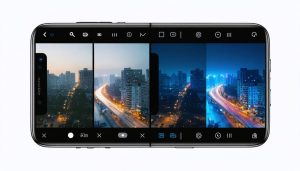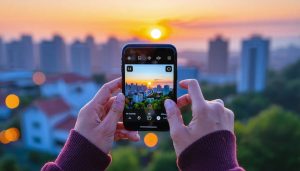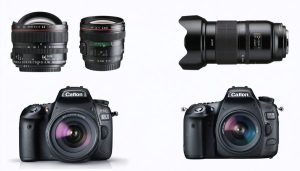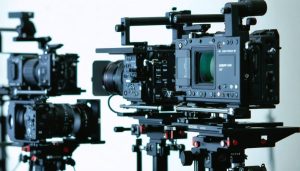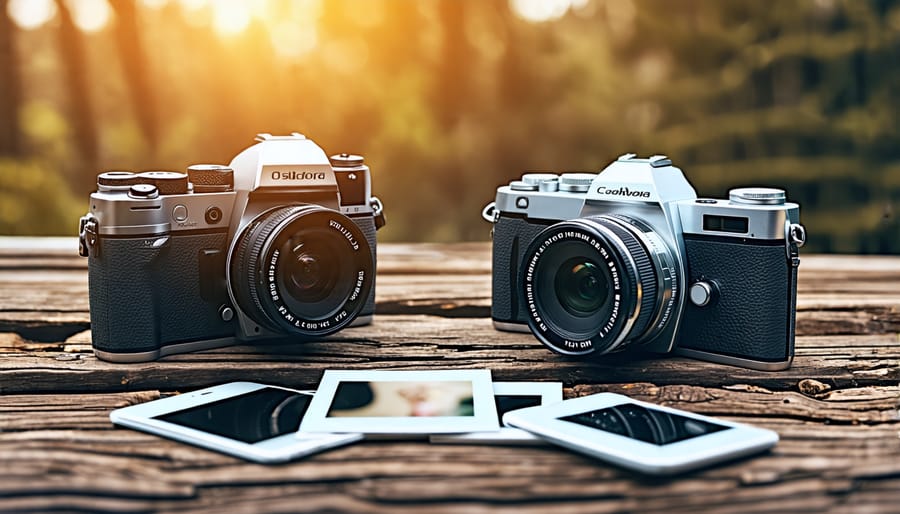
Compare the capabilities of smartphone cameras and traditional point-and-shoot models to determine which offers the best balance of image quality, convenience and value for everyday photography. While smartphone cameras have rapidly advanced with computational photography and multiple lenses, dedicated point-and-shoots may still have an edge in terms of larger sensors, optical zoom range, ergonomics, and manual controls. However, the unbeatable portability of always having a capable camera in your pocket makes smartphones the go-to choice for most. Ultimately, the decision depends on your specific needs and how much you’re willing to carry. This article will explore the strengths and limitations of each to help you choose the right tool for capturing your memories.
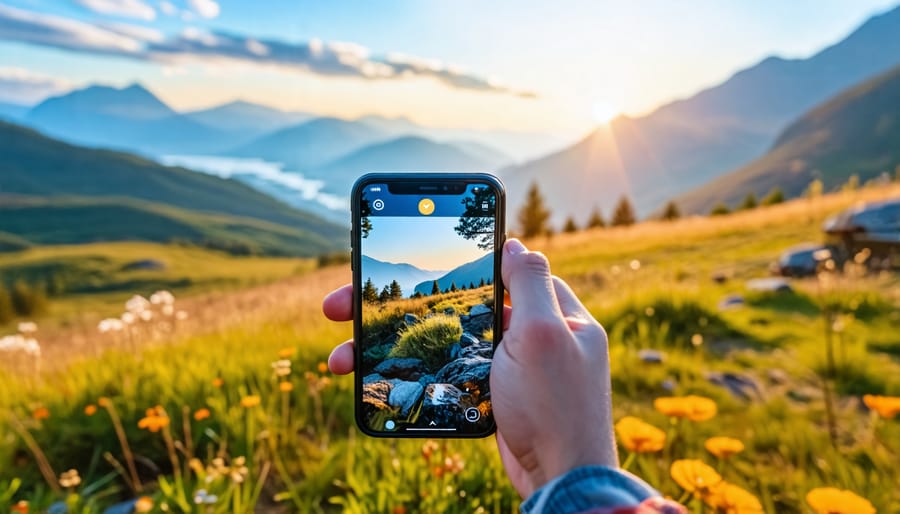
The Convenience Factor
Always in Your Pocket
One of the greatest advantages of using your smartphone for photography is that it’s always with you, tucked conveniently in your pocket or bag. This means you’ll never miss a photo opportunity, whether it’s a stunning sunset, an impromptu family moment, or an unexpected encounter with wildlife. With your smartphone’s camera constantly at your fingertips, you can capture life’s fleeting moments as they happen, without the need to carry a separate device. The best camera is the one you have with you, and more often than not, that camera is your smartphone.
Editing and Sharing Simplicity
One of the greatest advantages of smartphone cameras is the simplicity they offer when it comes to editing and sharing photos. With a few taps on your device, you can easily apply filters, adjust settings like brightness and contrast, crop images, or add text and stickers. Many smartphones come with built-in editing tools, while others offer a wide range of third-party apps to take your photo editing to the next level. Once you’re happy with your edited image, sharing it is a breeze. Smartphones allow you to instantly post your photos on social media platforms, send them via messaging apps, or upload them to cloud storage for safekeeping. This seamless integration of capturing, editing, and sharing makes smartphone photography incredibly convenient and accessible for everyone, from casual snappers to serious enthusiasts looking to showcase their work online.

Image Quality Showdown
Sensor Size and Pixel Count
When it comes to image quality, sensor size plays a crucial role. Smartphones typically have smaller sensors compared to point-and-shoots, which can limit their low-light performance and dynamic range. However, advancements in computational photography have helped bridge this gap, with many high-end smartphones now delivering impressive results even in challenging lighting conditions. Megapixels, or the number of pixels in an image, also impact image quality but not as significantly as sensor size. While higher megapixel counts allow for larger prints and more cropping flexibility, they don’t necessarily translate to better overall image quality. In fact, cramming too many pixels onto a small sensor can lead to increased noise and reduced low-light performance. Point-and-shoot cameras often have the advantage of larger sensors and more balanced megapixel counts, resulting in cleaner images with better color depth and dynamic range. They also tend to have more powerful built-in flashes, which can help illuminate subjects in low-light situations. Ultimately, the importance of sensor size and megapixels depends on your specific needs. If you prioritize image quality and low-light performance, a point-and-shoot with a larger sensor may be the better choice. However, if convenience and portability are your main concerns, a smartphone with advanced computational photography capabilities can still deliver excellent results for everyday shooting.
Lens Versatility
When it comes to lens versatility, point-and-shoot cameras have a distinct advantage over smartphone cameras. While smartphones rely on digital zoom, which simply crops and enlarges the image, many point-and-shoots feature optical zoom lenses. Optical zoom maintains image quality throughout the zoom range, allowing you to capture distant subjects without sacrificing detail or clarity. This is particularly useful for wildlife, sports, or travel photography, where getting closer to your subject isn’t always possible. Some advanced point-and-shoot models even offer interchangeable lenses, providing even greater flexibility and creative control. With the ability to switch between wide-angle, telephoto, and specialized lenses like macro or fisheye, photographers can adapt to various shooting situations and experiment with different perspectives. This versatility enables point-and-shoots to bridge the gap between smartphone cameras and more advanced camera systems, making them an attractive option for enthusiasts looking to expand their photographic capabilities without the bulk and complexity of a DSLR or mirrorless camera. However, it’s worth noting that not all point-and-shoots offer these advanced lens features. Entry-level models may still rely on digital zoom, so it’s essential to research and compare specifications when choosing a camera that suits your needs and budget.
Computational Photography
Smartphone cameras have revolutionized photography by leveraging cutting-edge computational techniques to produce stunning images. Unlike traditional point-and-shoots, smartphones employ powerful AI algorithms and multi-frame processing to enhance image quality in ways that were once impossible. By capturing multiple frames in rapid succession, these intelligent cameras can analyze and combine data to reduce noise, improve dynamic range, and boost detail. This computational wizardry allows smartphones to deliver crisp, vivid photos even in challenging lighting conditions. Moreover, AI-powered features like Night Mode and HDR enable users to capture incredible low-light shots and high-contrast scenes with ease. Computational photography also powers advanced bokeh effects, allowing you to artfully blur backgrounds for professional-looking portraits. With each generation, smartphone manufacturers push the boundaries of what’s possible, using machine learning to optimize settings, recognize scenes, and even suggest composition improvements in real-time. While point-and-shoots still have their place, it’s clear that the future of everyday photography lies in the palm of your hand, thanks to the unparalleled convenience and increasingly impressive capabilities of smartphone cameras powered by computational magic.
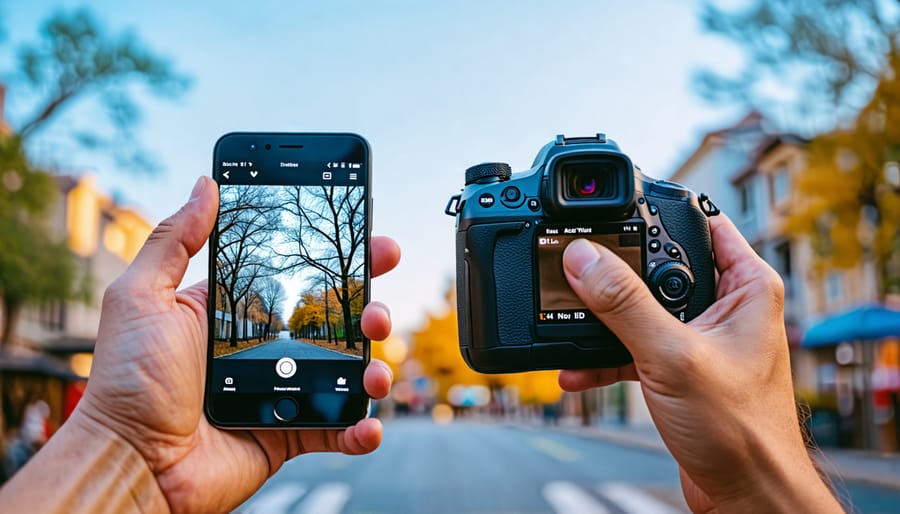
Ergonomics and Usability
One-Handed Operation
When it comes to one-handed operation, smartphones have a distinct advantage over point-and-shoot cameras. With a smartphone, you can easily capture photos and videos using the touchscreen controls, which are designed for intuitive, single-handed use. Adjusting settings, switching modes, and reviewing your shots can all be done with a few taps or swipes of your thumb. This convenience makes smartphones ideal for quick, spontaneous photography when you don’t have both hands free. On the other hand, point-and-shoot cameras typically rely on physical buttons and dials for control. While these tactile controls can be more precise and offer a satisfying feel, they often require two hands to operate effectively. Holding the camera steady with one hand while adjusting settings with the other can be challenging, especially if you’re trying to capture a fleeting moment. However, some point-and-shoot models do offer limited touchscreen functionality, which can bridge the gap between the two device types.
Viewfinder and Screen
When composing shots, the experience differs significantly between smartphones and point-and-shoots. Smartphones feature large, high-resolution touchscreens that provide a clear, real-time preview of your image. This allows for intuitive framing and easy adjustments to exposure and focus with a simple tap. However, glare and reflections can sometimes make it challenging to see the screen in bright sunlight. On the other hand, many point-and-shoots offer both an optical viewfinder and an LCD screen. The viewfinder provides a clear, lag-free view of your subject, even in bright conditions, making it easier to track moving subjects. Some models feature articulating LCD screens that can tilt or rotate, allowing for creative compositions from high or low angles. While smartphone screens are generally larger, the dedicated controls and ergonomic design of point-and-shoots can provide a more stable and comfortable shooting experience, especially during extended use.
The Cost Consideration
When comparing the cost of high-end smartphone cameras and dedicated point-and-shoot cameras, there are notable differences to consider. While flagship smartphones often come with hefty price tags upwards of $1,000, their versatile and advanced cameras are part of an all-in-one package that includes numerous other features. On the other hand, point-and-shoot cameras typically range from around $200 to $600, with some high-end models reaching $1,000 or more. However, it’s important to note that with a dedicated camera, you’re investing solely in photographic capabilities. High-end point-and-shoots often offer larger sensors, superior optics, and more manual controls compared to smartphone cameras, justifying their price for photography enthusiasts. Ultimately, the cost consideration depends on your priorities and whether you’re willing to pay a premium for a device dedicated to capturing high-quality images or if the convenience and multi-functionality of a smartphone camera better suit your needs and budget.

